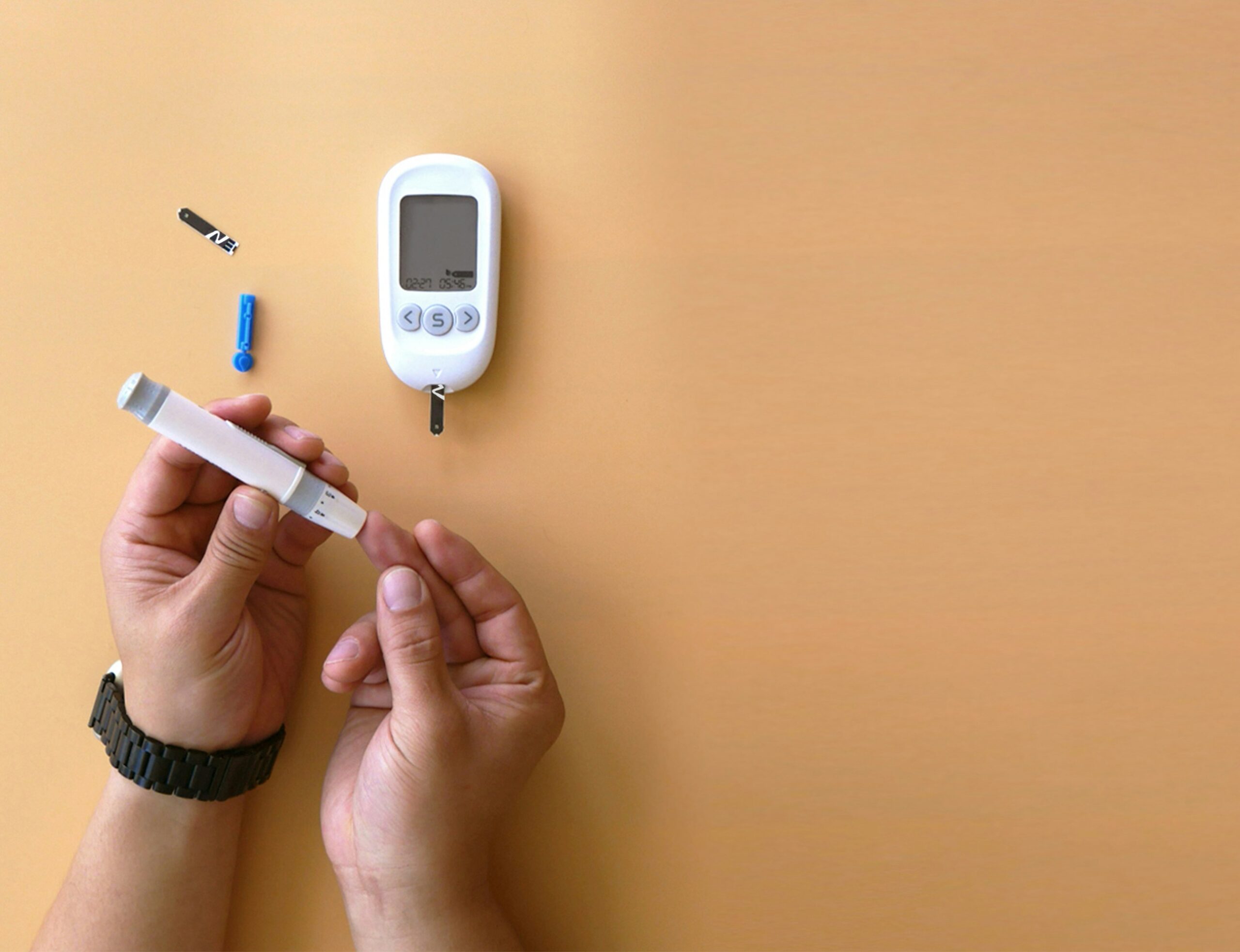Diabetes is a chronic condition that affects how your body processes blood sugar (glucose). It occurs when the body either does not produce enough insulin or cannot use insulin properly. Uncontrolled diabetes can lead to serious health complications, including heart disease, kidney damage, and nerve disorders. There are two main types of diabetes: Type 1 and Type 2 diabetes. Understanding their differences is crucial for prevention, early diagnosis, and management.
What is Diabetes?
Diabetes is a metabolic disorder that leads to high blood sugar levels over time. Glucose is an essential energy source for your body, but when insulin is absent or ineffective, sugar builds up in the blood instead of being used for energy.
Types of Diabetes
- Type 1 Diabetes – An autoimmune disease where the body mistakenly attacks insulin-producing cells.
- Type 2 Diabetes – A lifestyle-related condition where the body becomes resistant to insulin or does not produce enough.
Other forms of diabetes include gestational diabetes (occurring during pregnancy) and pre-diabetes (a condition that precedes Type 2 diabetes).
Type 1 Diabetes: Causes, Symptoms & Treatment
What is Type 1 Diabetes?
Type 1 diabetes is an autoimmune disorder in which the immune system destroys insulin-producing cells in the pancreas. This results in little or no insulin production, making insulin therapy necessary for survival.
Causes of Type 1 Diabetes
The exact cause is unknown, but factors include:
Genetics – A family history of Type 1 diabetes increases risk.
Autoimmune Response – The body mistakenly destroys pancreatic beta cells.
Environmental Factors – Viruses or toxins may trigger the condition.
Symptoms of Type 1 Diabetes
- Frequent urination
- Increased thirst and dry mouth
- Unexplained weight loss
- Extreme hunger
- Fatigue and weakness
- Blurred vision
If you experience these symptoms, seek medical attention immediately.
How is Type 1 Diabetes Diagnosed?
Doctors diagnose Type 1 diabetes through:
A1C Test – Measures blood sugar levels over 2-3 months.
Fasting Blood Sugar Test – Measures glucose levels after 8+ hours of fasting.
Antibody Tests – Checks for immune system attacks on pancreatic cells.
Managing Type 1 Diabetes
Since Type 1 diabetes cannot be prevented, lifelong management is required:
Insulin Therapy – Daily insulin injections or an insulin pump.
Blood Sugar Monitoring – Frequent checks to maintain stable levels.
Healthy Eating – Low-carb, high-fiber diet for better glucose control.
Physical Activity – Exercise helps regulate blood sugar.
Source: Niddk.nih.gov
Type 2 Diabetes: Causes, Symptoms & Prevention
What is Type 2 Diabetes?
Type 2 diabetes is the most common form of diabetes, affecting 90-95% of diabetic individuals. It develops when the body becomes resistant to insulin or does not produce enough to regulate blood sugar properly.
Causes & Risk Factors of Type 2 Diabetes
Insulin Resistance – The body’s cells stop responding to insulin.
Obesity & Inactivity – Excess body fat, especially belly fat, increases risk.
Unhealthy Diet – High sugar and processed foods contribute to the condition.
Family History – Having diabetic parents increases the likelihood.
Age Factor – Risk increases after 45 years old.
Ethnic Background – Higher prevalence among African Americans, Hispanics, and Asians.
Symptoms of Type 2 Diabetes
Type 2 diabetes develops gradually, so symptoms may go unnoticed for years:
- Increased thirst & frequent urination
- Slow wound healing
- Fatigue & irritability
- Tingling or numbness in hands and feet
- Blurred vision
Diagnosis of Type 2 Diabetes
Doctors use several tests to confirm diabetes:
A1C Test – Measures average blood glucose over 3 months.
Fasting Blood Sugar Test – Checks sugar levels after fasting overnight.
Oral Glucose Tolerance Test – Monitors blood sugar changes after drinking glucose solution.
How to Prevent Type 2 Diabetes
Unlike Type 1 diabetes, Type 2 diabetes can often be prevented with lifestyle changes:
Maintain a Healthy Weight – Losing just 5-10% of body weight reduces risk.
Exercise Regularly – Aim for 150 minutes of moderate activity per week.
Healthy Diet – Focus on whole grains, lean proteins, and fiber-rich foods.
Avoid Sugary Drinks – Cut down on soda, fruit juices, and processed foods.
Monitor Blood Sugar – Get regular check-ups, especially if at risk.
Source: Clevelandclinic.org
Type 1 vs. Type 2 Diabetes: Key Differences
| Feature | Type 1 Diabetes | Type 2 Diabetes |
| Cause | Autoimmune attack on insulin-producing cells | Insulin resistance or reduced insulin production |
| Onset | Sudden (childhood or early adulthood) | Gradual (usually in adults, but increasing in young people) |
| Risk Factors | Genetics, autoimmune response, environment | Obesity, poor diet, inactivity, genetics |
| Symptoms | Quick onset, severe symptoms | Slow development, often unnoticed |
| Treatment | Requires insulin therapy | Lifestyle changes, oral medication, sometimes insulin |
| Prevention | No known prevention | Can be prevented with diet & exercise |
Complications of Uncontrolled Diabetes
If left unmanaged, both Type 1 and Type 2 diabetes can lead to severe health issues:
Heart Disease – Increased risk of heart attack & stroke.
Kidney Disease (Nephropathy) – Can lead to kidney failure.
Nerve Damage (Neuropathy) – Causes tingling, pain, or numbness in limbs.
Vision Problems (Retinopathy) – Can result in blindness.
Foot Problems – Poor circulation may lead to infections and amputations.
Alzheimer’s Disease – Some studies link diabetes to cognitive decline.
Best Meal Plans for Diabetes Management
A diabetes-friendly diet focuses on low glycemic index (GI) foods, fiber-rich meals, and balanced nutrition.
Ideal Foods for Diabetes:-
Non-Starchy Vegetables – Broccoli, spinach, kale, zucchini
Lean Proteins – Chicken, turkey, tofu, eggs, fish
Whole Grains – Brown rice, quinoa, whole wheat bread
Healthy Fats – Avocados, nuts, olive oil
Low-Sugar Fruits – Berries, apples, pears
Foods to Avoid:-
Sugary Drinks – Soda, sweetened fruit juices
Refined Carbs – White bread, pasta, processed snacks
Fried Foods – French fries, fried chicken
Processed Meats – Bacon, sausages, hot dogs
Usual Meal Plan for Diabetes:-
| Meal | What to Eat |
| Breakfast | Scrambled eggs with spinach and whole wheat toast |
| Snack | A handful of almonds and a small apple |
| Lunch | Grilled salmon with quinoa and roasted vegetables |
| Snack | Greek yogurt with chia seeds |
| Dinner | Stir-fried tofu with brown rice and steamed broccoli |
Source: Cdc.gov
Best Exercises for Diabetes Control
Exercise helps lower blood sugar levels and improves insulin sensitivity.
Top Exercises for Diabetes:-
Aerobic Exercises (150 min/week): Walking, jogging, cycling, swimming
Strength Training (2-3 times/week): Weight lifting, resistance bands
Flexibility & Balance (daily): Yoga, Tai Chi, stretching
Best Workout Plan for Diabetes:-
| Day | Activity |
| Monday | 30-minute brisk walk + light strength training |
| Tuesday | Yoga + stretching |
| Wednesday | Cycling or swimming for 30 minutes |
| Thursday | Strength training (bodyweight exercises) |
| Friday | 30-minute walk or dance class |
| Saturday | Hiking or a fun outdoor activity |
| Sunday | Rest or light stretching |
Tip: Always check your blood sugar levels before and after exercising to prevent sudden drops.
Source: Pmc.ncbi.nlm.nih.gov
Key Takeaways To Managing Diabetes
Understanding diabetes is the first step to prevention and management. If you or a loved one is at risk, take proactive steps by:
1. Eating a balanced diet
2. Staying physically active
3. Monitoring blood sugar levels regularly
4. Consulting a doctor for proper guidance
By making small lifestyle changes, you can significantly reduce your risk and lead a healthier life. Prioritizing healthy eating, regular exercise, and stress management can help maintain stable blood sugar levels and prevent complications. Remember, consistent habits and early intervention are key to successfully managing diabetes and improving overall well-being.
Patient’s Story
How Allie Mattey Overcame Type 2 Diabetes: A Journey to Health & Fitness
At just 23 years old, Allie Mattey from Marietta, Ohio, turned her type 2 diabetes diagnosis into a life-changing journey. Through commitment to diet, exercise, and personal growth, she successfully lowered her A1C to normal levels, eliminated her need for medication, and transformed her overall well-being.
The Turning Point: A Wake-Up Call
Allie’s journey to wellness began in January 2020 when she realized her health was holding her back from living life to the fullest. Determined to make a change, she started working out at a local fitness center, joining Group Exercise classes that provided both structure and motivation.
Falling in Love with Fitness
What started as an effort to manage diabetes soon became a passion. The sense of community, strength, and personal achievement she found in exercise motivated her to push further. She dedicated herself to fitness, and by September 2020, she took a major step—becoming a certified POUND Pro instructor, a high-energy workout inspired by drumming.
From Student to Instructor: A New Career Path
Her enthusiasm for fitness didn’t stop at POUND Pro. A few months later, she earned a national fitness instructor certification through the American Council on Exercise (ACE). Continuing her education, she pursued certifications in other workout formats, including:
HIGH-Low – A low-impact, high-energy workout
AMPD Resistance – Strength training with resistance bands
The Results: Weight Loss & Diabetes Reversal
Through dedication and consistency, Allie has achieved remarkable results:
1. Lost 80 pounds and continues to stay active
2. Reversed type 2 diabetes and brought her A1C to a normal range
3. Eliminated the need for diabetes medication
4. Inspires others as a certified fitness instructor
Reference Sources:
https://www.niddk.nih.gov/health-information/diabetes/overview/what-is-diabetes/type-1-diabetes
https://www.niddk.nih.gov/health-information/diabetes
https://my.clevelandclinic.org/health/diseases/21501-type-2-diabetes
https://www.cdc.gov/diabetes/healthy-eating/diabetes-meal-planning.html









Leave a Reply